Panzer Platform
Well-Known Member
- Joined
- Jun 9, 2022
- Messages
- 2,925
- Reaction score
- 2,921
- Location
- California
- Country
- United States
- Dash Cam
- 2024 Minimum Requirements: STARVIS 2 & HDR
Whenever I get a new dash cam for testing one of the first things I do is check focus.
In the past I’ve been able to do this in my garage, and confirm with driving footage.
But this time I don’t think I’ll be able to that with the A229 Pro & A229 Plus remote telephoto cameras because my garage is too small, so I plan film across the street.
I tried to pace off the distance but I want an exact measurement.
So I ordered yet another piece of test equipment solely for testing dash cams I never thought I would own.
I’m obsessed with being a “finder of fact” given the advertised claims across all brands in the dash cam industry.
First it was a Variable DC power supply for parking mode power consumption.
Then a Thermal Imaging Camera to measure heat signature.
And now a Laser Rangefinder.
I’m feeling in over my head, and this is where you guys come in if you have actual hands on experience, (not just theory) I’m looking at you Nigel. lol
I would first like to know if the Laser Rangefinder I ordered is junk, and should consider a different model.
I spent 24 hours of exhaustive research looking for the best “bang for your buck” option.
I remember seeing these decades ago in my hunter safety course, and they were $500.
I settled on the CIGMAN CT-1000 ($53);
https://www.amazon.com/gp/B0CQ891725

 cigman.com
I preferred the CT-1000 Pro but, it was ($98), double the cost for OLED Red & Green reticle display, (non-Pro is black).
cigman.com
I preferred the CT-1000 Pro but, it was ($98), double the cost for OLED Red & Green reticle display, (non-Pro is black).
I can’t wait to tell Ariel I got my first “radar gun” it apparently has a Speed Test Mode. lol
Second I would like to know if there are any special considerations taken into account when testing telephoto dash cams, as opposed to traditional wide angle.
1.) Mounting Location Front Windshield: Center of windshield, or off center closer to oncoming traffic).
2.) Mounting Location Rear window: Center, or off center closer to passing traffic.
3.) Horizon Line Adjustment: Viofo have instructed me to adjust the telephoto cameras with “more road than sky”.
Without a numerical specification, and HLA in the live view of the APP I’m not sure how I can achieve repeatable results.
I’ll start out with my tried & true 50/50 Road & Sky to film baseline test footage so I can confirm & verify “more road than sky” makes an improvement.
4.) Test Mule Ride Height: Car, SUV, 4x4 Truck all have different overall heights that may affect telephoto aiming, and POV.
My test mule is a 2004 Ford Crown Victoria (civilian model).
Front Windshield Mounting Height: 52” inches (132cm)
Rear Window Mounting Height: 55” inches (140cm)
The rear is higher because I installed heavy duty shocks meant for 1997-2003 F-150.
@TonyM
@Mtz
@Nigel
@pinoyplaya4life
@rcg530
@safedrivesolutions
@Vortex Radar
@evad
@kamkar
@viofo
@Karagandinez
@MarcoM
@evmedievalol
@LeadMonkey
@Oban
@Zackw419
@SafetyStealth
@Harsh
@Voldur
@JardaB
@black9white
@Search&Rescue
@Agie
@DoubleDawg
@ogzogz
@DAP
@VIOFO-Support
@Julian23
In the past I’ve been able to do this in my garage, and confirm with driving footage.
But this time I don’t think I’ll be able to that with the A229 Pro & A229 Plus remote telephoto cameras because my garage is too small, so I plan film across the street.
I tried to pace off the distance but I want an exact measurement.
So I ordered yet another piece of test equipment solely for testing dash cams I never thought I would own.
I’m obsessed with being a “finder of fact” given the advertised claims across all brands in the dash cam industry.
First it was a Variable DC power supply for parking mode power consumption.
Then a Thermal Imaging Camera to measure heat signature.
And now a Laser Rangefinder.
I’m feeling in over my head, and this is where you guys come in if you have actual hands on experience, (not just theory) I’m looking at you Nigel. lol
I would first like to know if the Laser Rangefinder I ordered is junk, and should consider a different model.
I spent 24 hours of exhaustive research looking for the best “bang for your buck” option.
I remember seeing these decades ago in my hunter safety course, and they were $500.
I settled on the CIGMAN CT-1000 ($53);
https://www.amazon.com/gp/B0CQ891725

CIGMAN CT-1000 1200 Yards Golf Rangefinder
Offers a 1200-yard range with ±1 yard accuracy and rapid readings under 0.5 seconds. With a transflective LCD display, 7x magnification, and an adjustable diopter up to ±6°, it delivers high-definition, clear, and spacious views for precise targeting and fast readings. The slope switch is for...
 cigman.com
cigman.com
I can’t wait to tell Ariel I got my first “radar gun” it apparently has a Speed Test Mode. lol
Second I would like to know if there are any special considerations taken into account when testing telephoto dash cams, as opposed to traditional wide angle.
1.) Mounting Location Front Windshield: Center of windshield, or off center closer to oncoming traffic).
2.) Mounting Location Rear window: Center, or off center closer to passing traffic.
3.) Horizon Line Adjustment: Viofo have instructed me to adjust the telephoto cameras with “more road than sky”.
Without a numerical specification, and HLA in the live view of the APP I’m not sure how I can achieve repeatable results.
I’ll start out with my tried & true 50/50 Road & Sky to film baseline test footage so I can confirm & verify “more road than sky” makes an improvement.
4.) Test Mule Ride Height: Car, SUV, 4x4 Truck all have different overall heights that may affect telephoto aiming, and POV.
My test mule is a 2004 Ford Crown Victoria (civilian model).
Front Windshield Mounting Height: 52” inches (132cm)
Rear Window Mounting Height: 55” inches (140cm)
The rear is higher because I installed heavy duty shocks meant for 1997-2003 F-150.
@TonyM
@Mtz
@Nigel
@pinoyplaya4life
@rcg530
@safedrivesolutions
@Vortex Radar
@evad
@kamkar
@viofo
@Karagandinez
@MarcoM
@evmedievalol
@LeadMonkey
@Oban
@Zackw419
@SafetyStealth
@Harsh
@Voldur
@JardaB
@black9white
@Search&Rescue
@Agie
@DoubleDawg
@ogzogz
@DAP
@VIOFO-Support
@Julian23
Attachments
-
 Slow Down! .png445 KB · Views: 16
Slow Down! .png445 KB · Views: 16 -
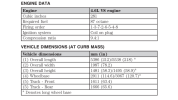 2004 Ford Crown Victoria Specifications (1) .png143.2 KB · Views: 13
2004 Ford Crown Victoria Specifications (1) .png143.2 KB · Views: 13 -
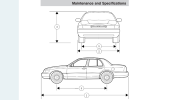 2004 Ford Crown Victoria Specifications (2) .png83.3 KB · Views: 12
2004 Ford Crown Victoria Specifications (2) .png83.3 KB · Views: 12 -
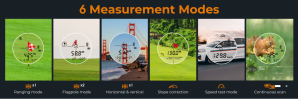 Speed Test Mode .png631.5 KB · Views: 12
Speed Test Mode .png631.5 KB · Views: 12 -
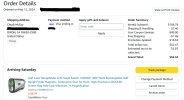 CIGMAN C-1000 $52.37 .png121 KB · Views: 12
CIGMAN C-1000 $52.37 .png121 KB · Views: 12 -
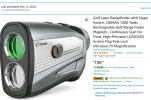 CIGMAN C-1000 .png511.3 KB · Views: 14
CIGMAN C-1000 .png511.3 KB · Views: 14
Last edited:



